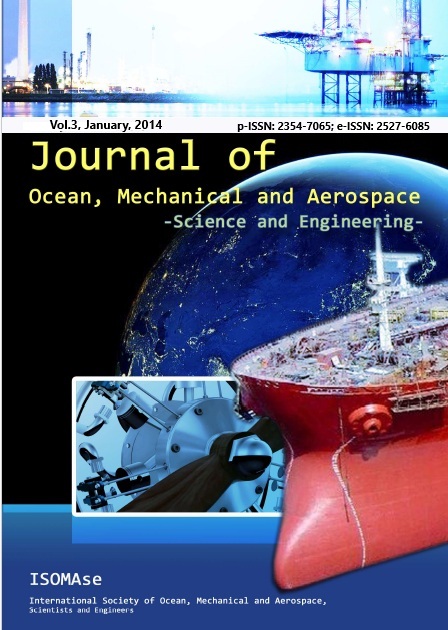Crack Growth Simulation at Welded Part of LNG Tank
Abstract
The objective of this research is to evaluate crack growth behavior from a surface crack to a through crack in a liquefied natural gas (LNG) tank . Crack growth behavior is analyzed by superposition version FEM (S-FEM). As a crack grows, part of the local mesh crosses over the global mesh. In S-FEM, the local mesh is defined as existing in the global mesh. When a part of the local mesh crosses over the global mesh, the Young’s modulus of the part is made small to ignore the influence of the part. In this way, the stress distribution of the local mesh is improved. In this study, crack growth behavior under a tensile cyclic load is analyzed. After crack penetration, the crack shape becomes rectangular. Crack growth behavior under tensile bending loading is also analyzed by simulating the four-point bending test. In this simulation, the crack shape becomes trapezoidal after penetration.















